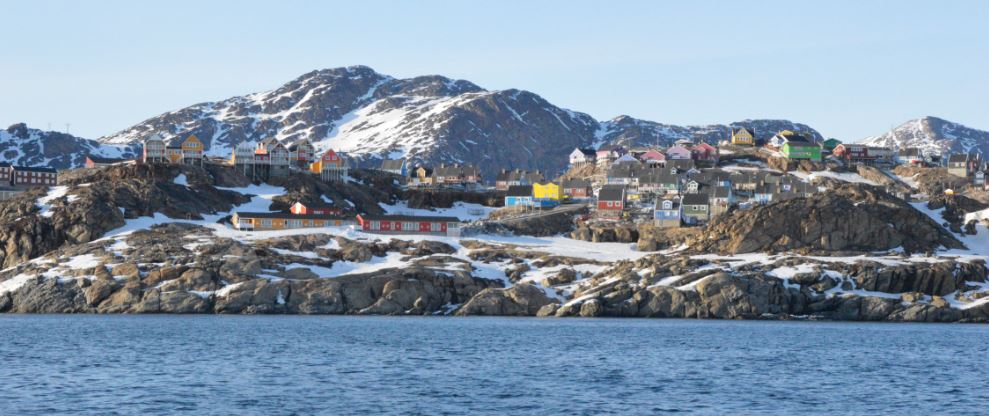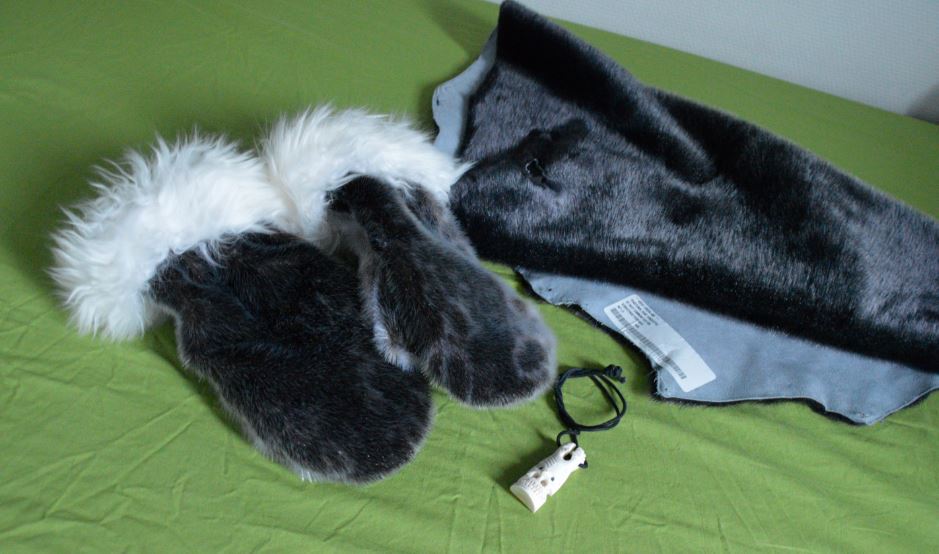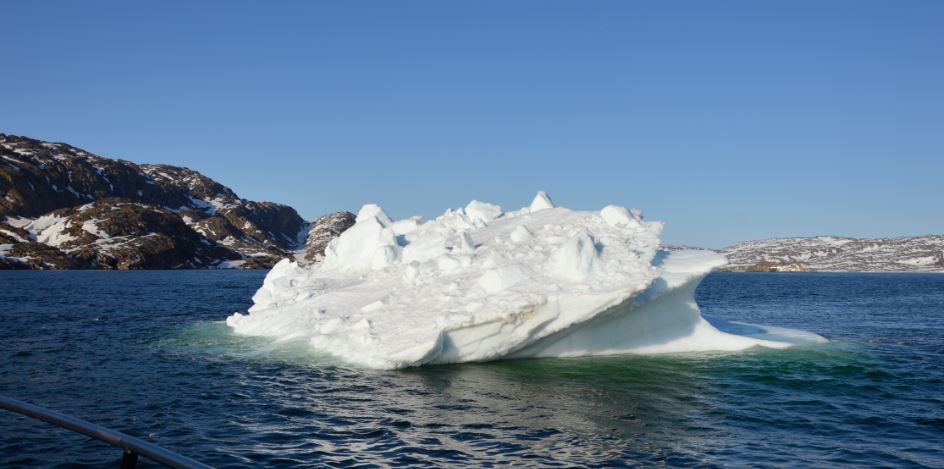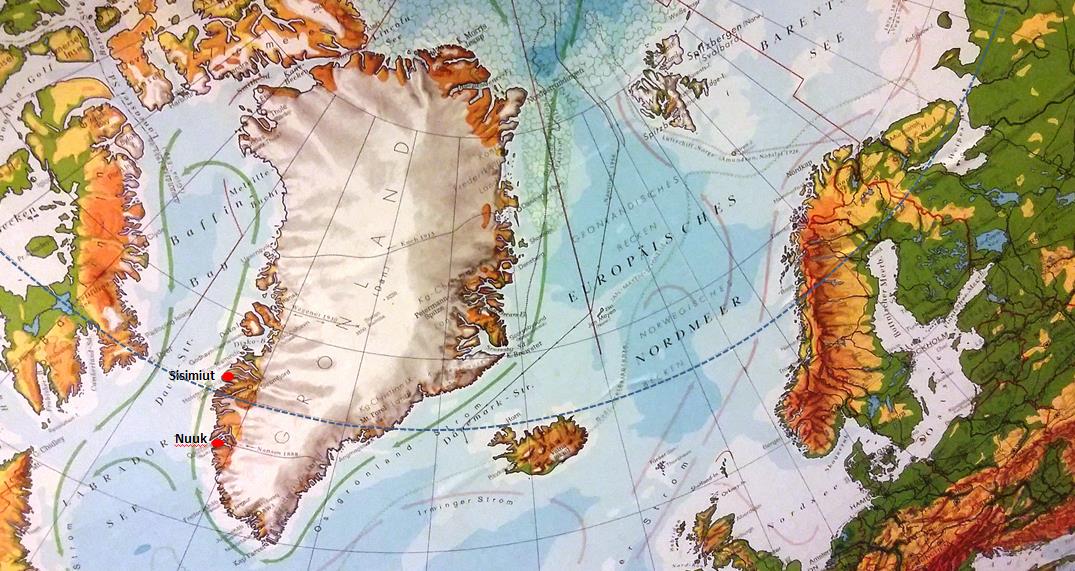The "Comprehensive Sustainable Development in Arctic Societies" Summer School took place in Sisimiut, Greenland in mid-May 2014. The Summer School was organized by UArctic, Ilisimatusarfik (University of Greenland) and CIRCLA, Aalborg University, Denmark. Fourteen postgraduate students – mostly PhD students but also some who had recently obtained their Master´s Degree – from all parts of the Arctic area had been selected to participate.
The programme consisted of keynote lectures and student presentations during four active and intensive days. The topics addressed in the student presentations varied from cruise ship tourism to regional development related issues, such as the aims of sparsely populated areas to gain new inhabitants, and from geopolitics and climate change to sustainable use of natural resources. The programme included also a boat trip to the nearby fjord. This blog entry is based both on the lively discussions in the Summer School as well as my own discussions with locals in Greenland.

Sisimiut is the second largest town of Greenland, with a population of 5,500. It is located at 66°52’N on the Western coast of Greenland, on the shore of Davis Strait, about 320 km (or approximately 20 hrs north by ship) from Greenland´s capital, Nuuk (64°10’N). In Sisimiut, there are plenty of public services, including kindergartens, schools, secondary education, police and the municipal administration of Qeqqata Kommunia. There are also lots of grocery stores and other shops, including souvenir shops to serve the tourism industry. Sisimiut has the northernmost ice-free harbor in West Greenland.
The biggest resource based livelihood sector in Greenland is fishing, even if services, health and education are the largest industry (Aslaksen et al. 2008). Fish and other marine products account, depending on the source, for 80 – 95 % of the total exports, and fishing gives livelihood to one fifth of the population in Greenland. In Sisimiut the Royal Greenland seafood processing factory is an important employer.
Tourism has also taken a footstep in this Arctic town since 1990s. Activities include husky and snow mobile safaris, whale watching cruises and cultural activities, to mention a few. Although some of the accommodation capacity is closed during the winter, artisan shops offer local handicrafts such as gloves, hats and jewelry made of seal skin and very skilful and detailed carvings made of local colourful stones and reindeer antlers, muskox horns and walrus and even narwhal tusks. Tupilaks are originally statues made for spiritual purposes depicting evil spirits, but nowadays miniature versions of them, made of for instance reindeer antlers, are popular souvenirs. Sealskin products are available not just in the natural silverly colour, but also in red, purple, bright green and black - to mention a few of the multitude of colours available. In some sealskins, there is a sticker label indicating "Traditional hunt by Inuit communities for subsistence purposes".

As the trade of products made of certain endangered species of flora and fauna is restricted by the CITES treaty, also tourists must pay attention to what they buy. For instance narwhal products are on the restriction list. Moreover, the EU has banned the trade of seal products in the European Union. The sales of seal skin products were said to have decreased because of this, but seal skin products can be imported from Greenland for own use and non-commercial purposes.
Arctic sea mammals and fish are important for tourism also as such. A local tourism entrepreneur highlighted the economic significance of catch-and-release fishing that attracts wealthy foreign tourists. As whale watching safaris are popular among tourists, whale hunting is seen negative from the perspective of tourism business. When a humpback whale was hunted near Sisimiut a few years ago, the amount of whales coming to the nearby fjord decreased dramatically.
During the Summer School cruise excursion to the nearby fjord we saw no whales, but a small iceberg had drifted there, to our great joy. The most famous place for iceberg cruises in Greenland is, however, the Icefjord in Ilulissat, further north from Sisimiut.


Sisimiut in Greenland and Rovaniemi, the capitol of the province of Lapland, Finland are both located at the Arctic Circle - Rovaniemi just below it at 66°30’N and Sisimiut 40-50 km North from it. Whereas mainly one of the definitions of the Arctic area, the Arctic Circle, applies for Rovaniemi, Greenland is arctic also in other terms such as the tree line and the July 10°C isotherm. Most of Greenland belongs to the High Arctic, except the coast line that belongs to the Low Arctic.
Despite the apparently long list of differences, also similarities could be spotted between Greenland and Finnish Lapland. One of the shared and uniting aspects, subsistence hunting, was a topic that was repeatedly addressed in the Summer School presentations as well as in my discussions with local people. Hunting and other subsistence ways of living are important for the indigenous peoples and other inhabitants of many parts of the North and the Arctic, even if people would have salaried jobs. This applies in Finnish Lapland, too, and moose and other game meat are found in the freezers of many families. In Greenland, particularly seals and caribou (reindeer) are hunted, as well as whales and other marine mammals. Some say even that salaried jobs are less favored during the most important hunting seasons. Although the loss of sea ice does not touch Nuuk and Sisimiut that are more southern, and Sisimiut has traditionally been the last open harbor throughout the winter, in more northern settlements the loss of sea ice has made hunting much more difficult.
The importance of subsistence hunting and other food gathering apparently throughout the Arctic raises a good question that was also brought up during the Summer School: isn´t economy also culture. In contemporary Arctic societies – as well as elsewhere – one can clearly see that all economically significant activities are not measured or operated by money or visible in economic measures such as the GDP (see also Strange & Bayley 2008). Aslaksen et al. (2008) have described Arctic economies as mixed cash-subsistence economies where “consumption possibilities are usually created by a combination of market participation and subsistence activities”. Moreover, “subsistence activities are mostly invisible in official statistics, due to lack of data and lack of recognition of how they contribute to livelihood and well-being” (ibid. p. 75).
When discussing the "meat in the freezer" issue with Greenlanders, they saw its importance from many directions. When you hunt, you have good quality meat in the freezer. It is valuable to know where your food has come from, in these times of food falsifications. It is also an addition to your household economy. When hunting, you get fresh air and sports. But more than that, it is part of the way of life in the Arctic: "That´s just the way we were brought up." The catch is traditionally shared with neighbours and other villagers. The increasing urbanization in the Arctic can pose threats to subsistence hunting as more pressure comes to the game species near the growing towns. Having the opportunity to continue ensuring that there is “meat in the freezer” seems like a central socio-economic-cultural sustainability issue for Arctic communities.
References:
- Aslaksen, Iulie, Winfried Dallmann, Davin L. Holen, Even Høydahl, Jack Kruse, Birger Poppel, Mary Stapleton and Ellen Inga Turi. 2008. Interdependency of subsistence and market economies in the Arctic. In: Solveig Glomsrød and Iulie Aslaksen (eds.) The Economy of the North 2008. Statistical Analyses. Statistics Norway. Available online: http://www.ssb.no/a/english/publikasjoner/pdf/sa112_en/sa112_en.pdf
- Hansen, Klaus Georg. 2005. Sisimiut. P. 1916. In: Nuttall, Mark (ed.). Encyclopedia of the Arctic. Routledge.
- Strange, Tracey & Anne Bayley. 2008. Sustainable development. Linking economy, society, environment. OECD.
Text and pictures by Ilona Mettiäinen